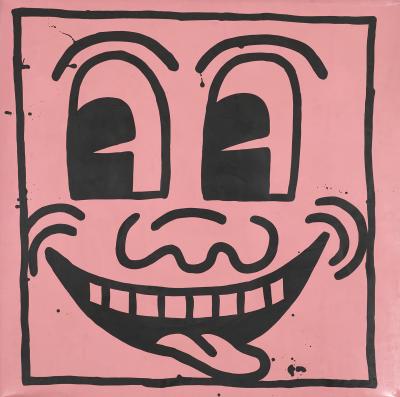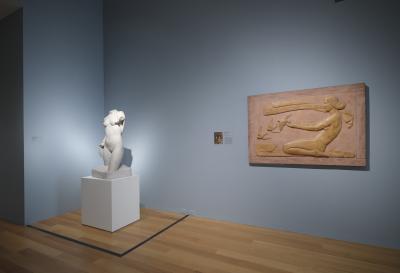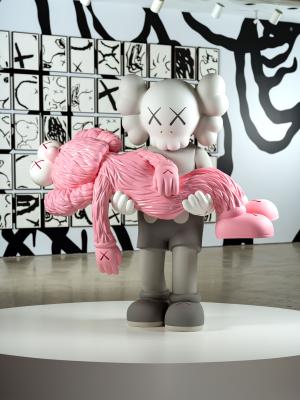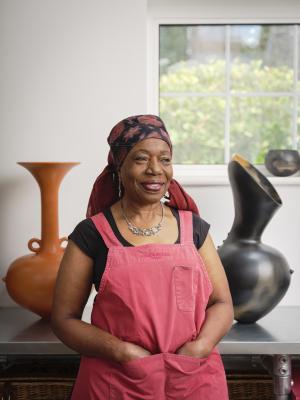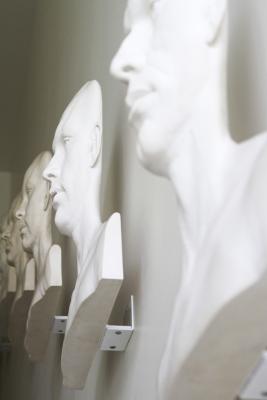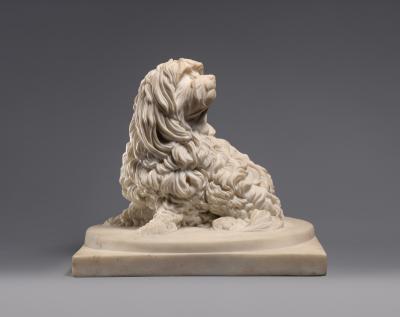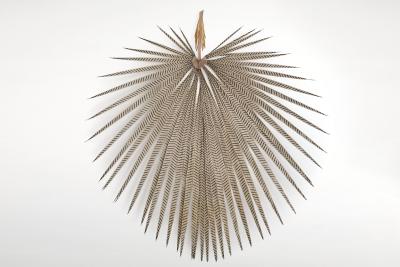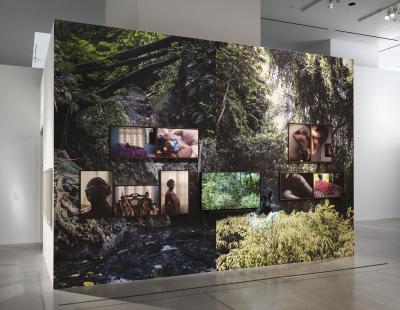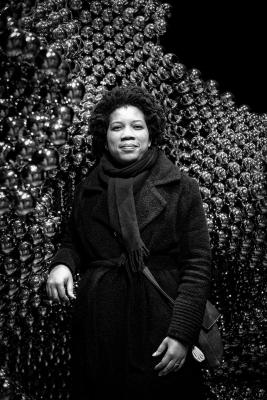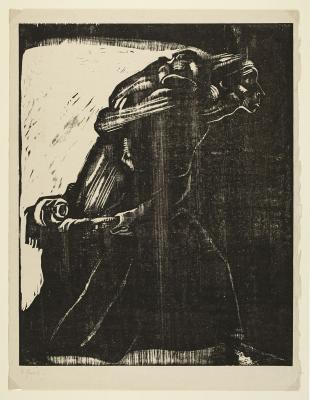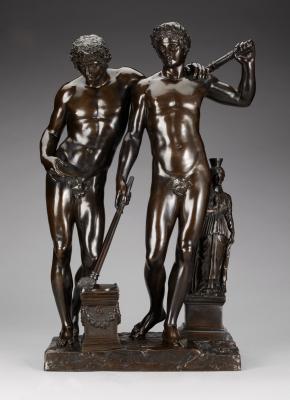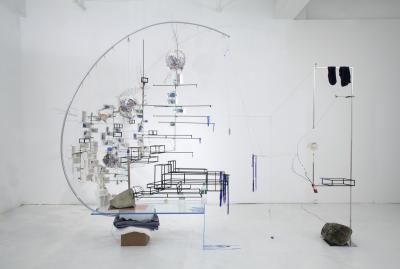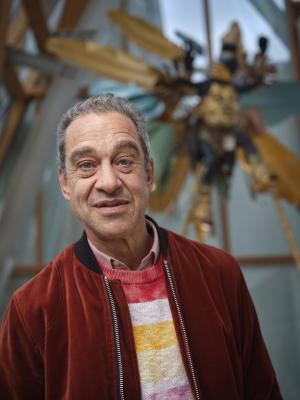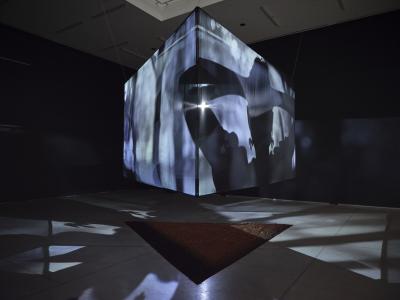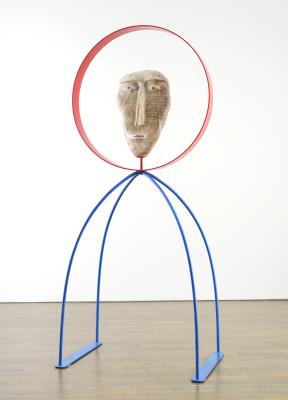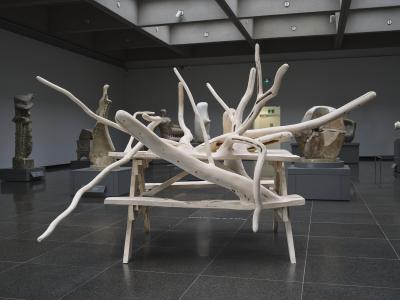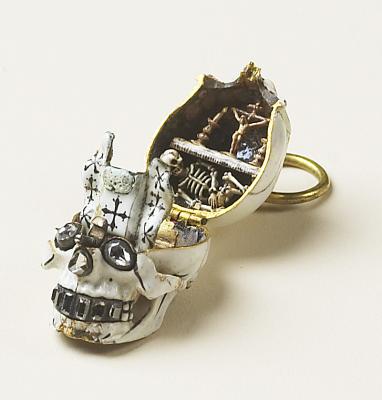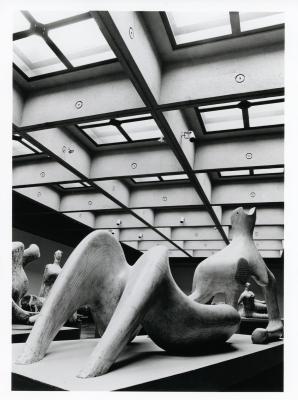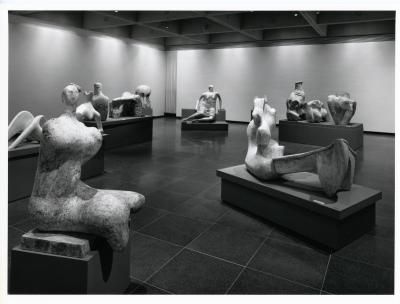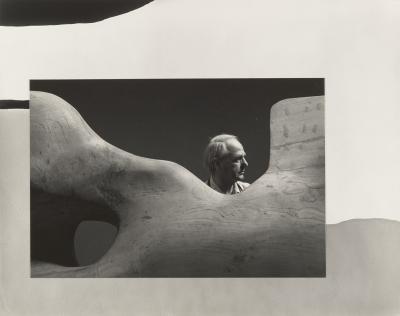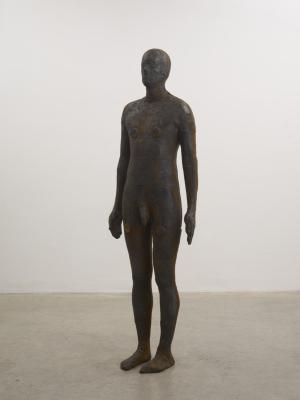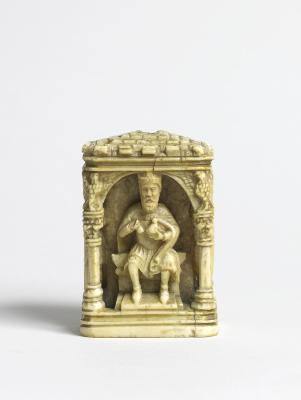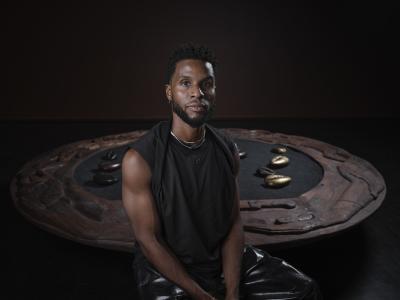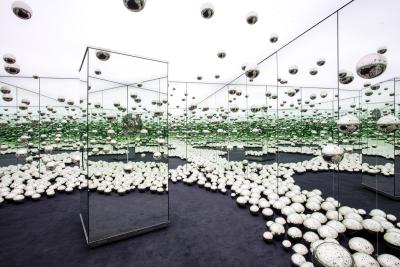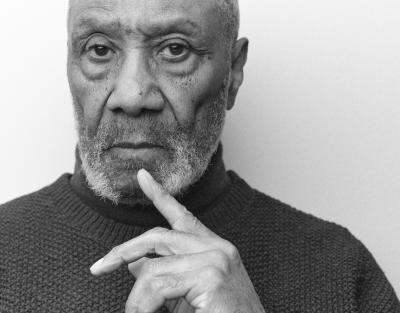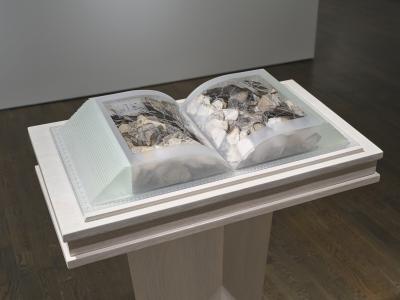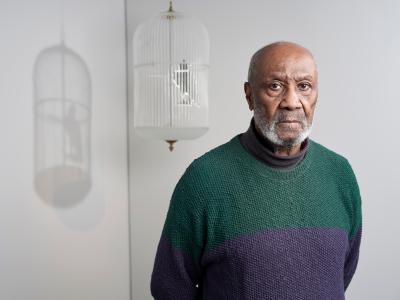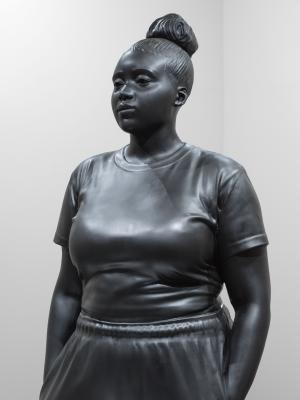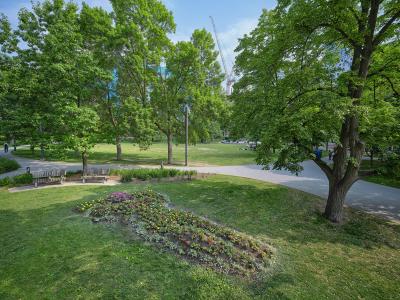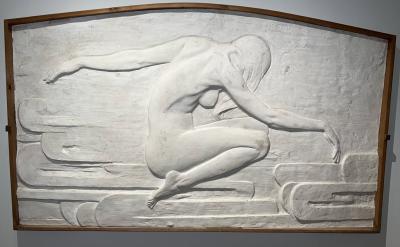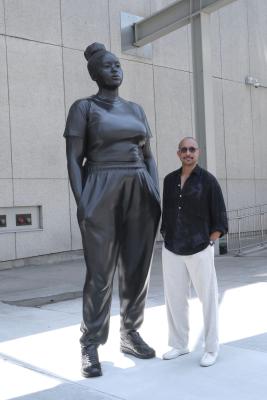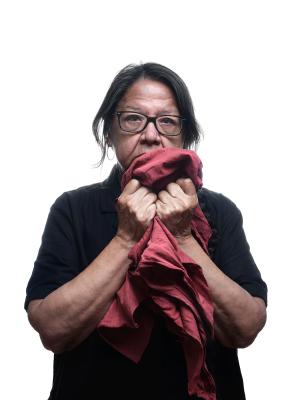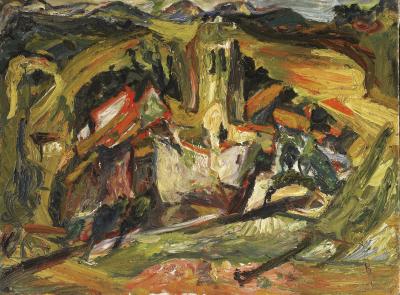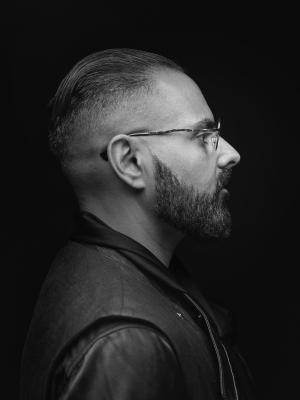Sculptural signifying with Blue Curry
The Bahamian contemporary artist shares insight on two striking works from Life Between Islands.
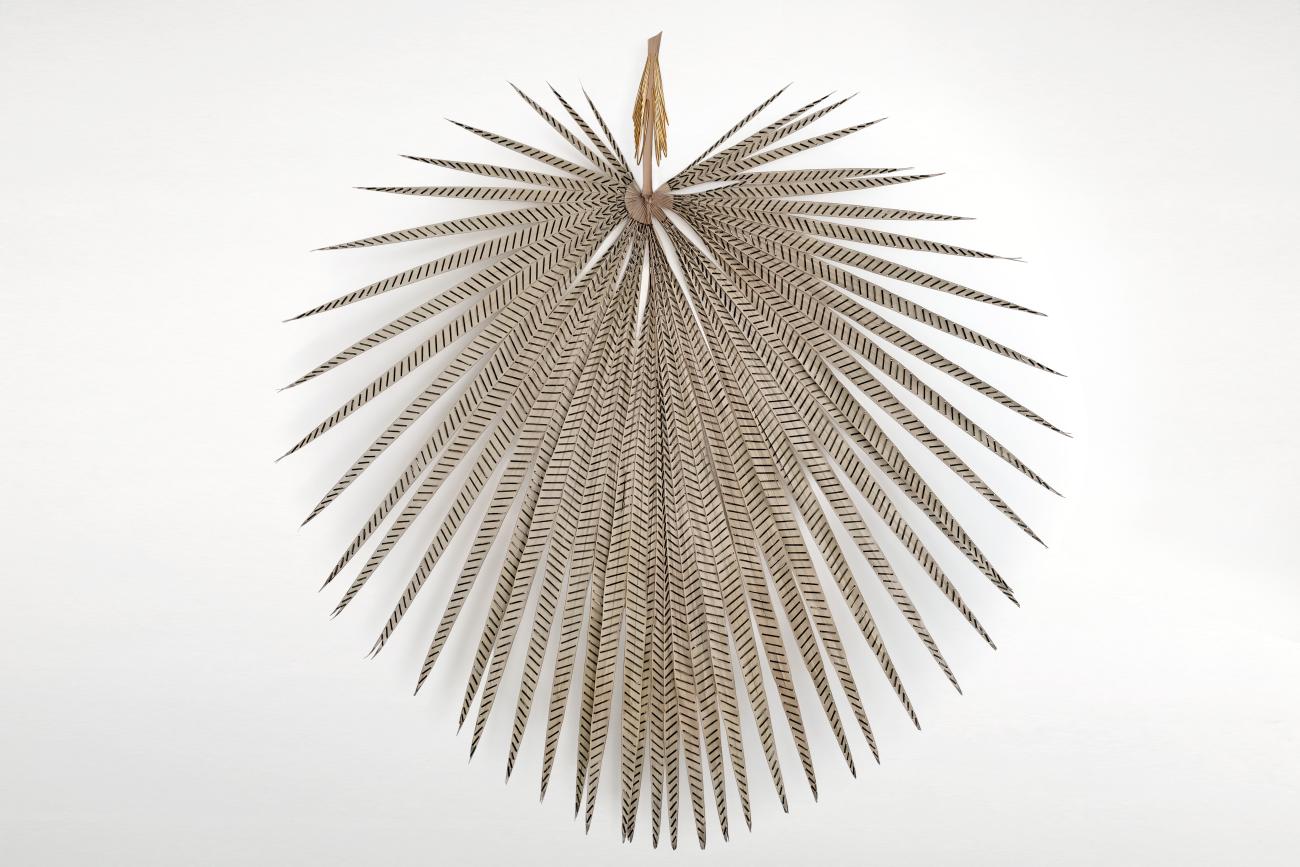
Blue Curry, Caribbean Queen (2020) Palm frond, Billy Ocean 'Caribbean Queen ' on cassette tape, imitation gold hoop earrings.1 metre x 1 metre. Image courtesy of the artist.
“I’ve reduced the Caribbean holiday down to its raw material elements, remixed them and placed them in the gallery using a recognisable modernist art language.”
The work of Bahamian contemporary artist Blue Curry centres the Caribbean, while boldly holding up a mirror to the exotifying gaze of Western tourists. Combining and juxtaposing materials often associated with tropical getaways – conch shells, palm fronds, golf balls – Curry constructs large-scale works that serve as biting critiques of the touristic consumption of the Caribbean. In his recent Canadian debut, two of Curry’s works were featured at the AGO in the exhibition Life Between Islands: Caribbean-British Art 1950s – Now.
In Caribbean Queen, Curry weaves strips of magnetic audio tape through a sprawling wall-hung palm frond, referencing Caribbean handicraft traditions that are now almost exclusively used to produce tourist souvenirs. The tape is from several cassette copies of the 1984 R&B number one hit of the same title, by British-Trinidadian artist Billy Ocean.
Islands, nos. 1-4 consists of four works that are part of an ongoing series. In this sculptural installation, visitors encounter four large-scale squares of equal size on the floor, meant to loosely resemble a string of islands. Each quadrant incorporates materials associated with the consumption and objectification of the Caribbean as a leisure space.
We spoke with Blue Curry to learn more about these two works, his thoughts about Life Between Islands, and his practice at large.
Foyer: Caribbean Queen has such a distinct materiality. Can you walk us through your decision-making process when selecting audio cassette tape, large gold hoop earrings and a palm frond? What specifically drew you towards Billy Ocean’s Caribbean Queen?
Blue Curry: Caribbean Queen, like many of my sculptures, is a meta exotic object created by layering up signifiers. The palm is the emblem of the tropical exotic. The scale of this frond, taken from my garden in Nassau, is exemplar of the epic nature that was used to exoticize the Caribbean historically and still represent it now. The oversized faux gold hoop earrings, from a women’s fashion website, were known as ‘creole’ earrings in the colonial period and were once exclusively adornments of the othered Black body. The cassette tape has a temporal exoticism about it as an obsolete media popular in the 80s. In that same period Billy Ocean released the song European Queen - unsuccessfully - and only when the lyrics were changed to Caribbean Queen did it top the charts. The singer himself affirmed its success was because the Caribbean was simply ‘more exotic.’
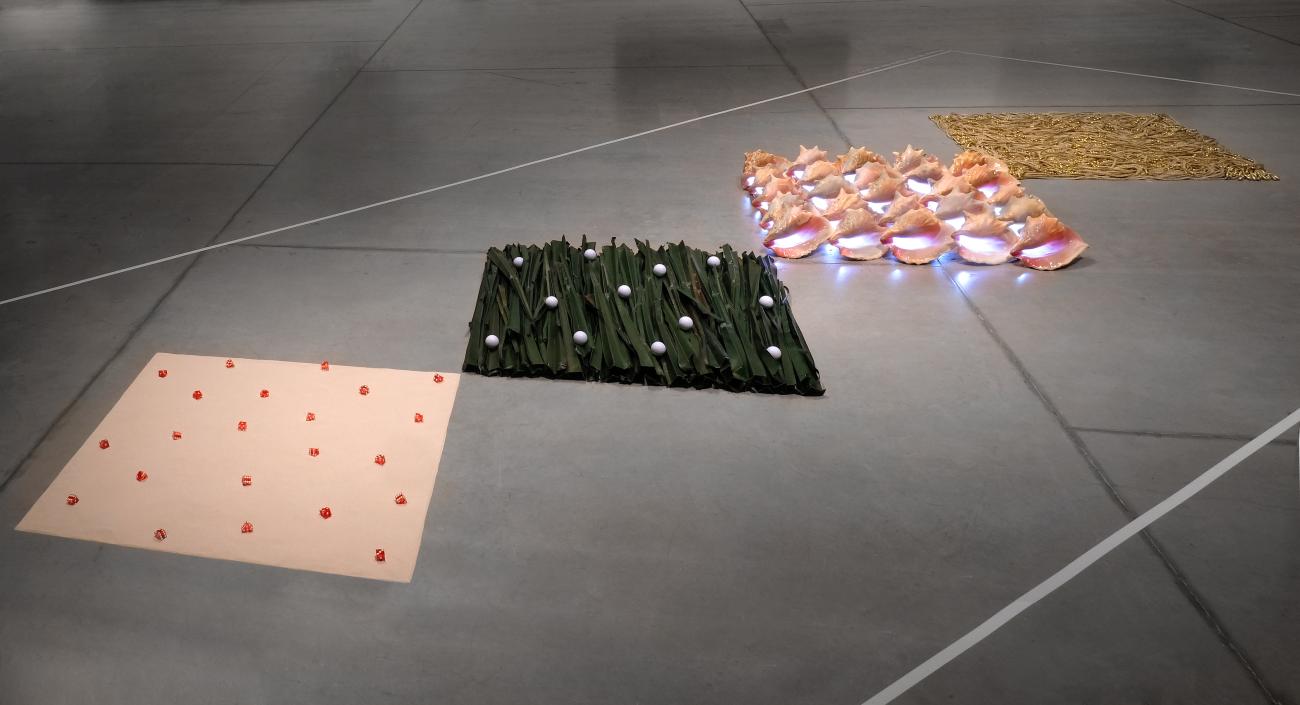
Blue Curry, Islands, nos. 1–4 (2022) conch shells, flashing LED lights, beach sand, dice, braided synthetic hair, plastic palm leaves, golf balls. Image courtesy of the artist.
Foyer: Like much of your work, Islands nos. 1-4 comments on the touristic consumption of the Caribbean and the stereotypes and clichés often perpetuated by non-Caribbean (presumably Western) travellers. When people who see the Caribbean through this lens encounter Islands nos. 1-4, what do you hope they experience? What do you hope they reflect on?
Blue Curry: Tourist fantasies of Caribbean places are far from reality and fulfilling those fantasies comes at a very high cost locally. Because I address this critically in my work, I’ve been accused of trying to ruin people’s holidays. That isn’t really my endgame. I would hope my works might encourage an awareness that their expectations are historical constructs and that there’s much more to the region than sipping a piña colada on the beach at sunset. In Islands nos. 1-4 I’ve reduced the Caribbean holiday down to its raw material elements, remixed them and placed them in the gallery using a recognisable modernist art language. This shift in the use of these leisure materials as art materials and seeing them in a more contemplative critical space opens up the possibility that viewers may consider the materials more seriously - and the Caribbean as well by extension.
Foyer: After viewing the AGO iteration of Life Between Islands, can you share your thoughts/feelings about how your works appeared in the exhibition? In your view, what makes them distinct within such a massive group show?
Blue Curry: There were indeed a lot of artists in the show, but I feel my work stood its ground. I occupied a particular fantastical visual space and my use of humour a distinct critical space. When I was invited to participate, I was actually worried about standing out too much from the other artists for these reasons; that my 25 flashing conch shells in the Islands nos. 1-4 installation might seem to be screaming for attention. But the beauty of a show of this scale is that there is room for everything and rather than not fitting in, the connections between my works and those of Hew Locke, Hurvin Anderson and Isaac Julien, for example, became very clear in situ. It’s a testament to the curators that works weren’t competing, but rather, in conversation with each other and in that way reinforcing a cohesive overall narrative that was amazing to be a part of.
Foyer: What is next on the horizon for Blue Curry? Can you share the details of any current or upcoming projects that you are working on with us?
Blue Curry: Presently, I am working on new projects from my studio in London, one of which is a public commission with Fringe Projects in Miami later this year. I’m in the touring exhibition Tropical is Political: Caribbean Art Under the Visitor Economy Regime which was just at the Mead Art Museum, Amherst College and I am currently showing in The Nation/The Imaginary at the National Art Gallery of The Bahamas (NAGB). Also, I have launched a project space and residency in Hackney, London, with a Caribbean focus called Ruby Cruel and worked with over a dozen artists, curators and academics so far. Other than all of this, I just keep looking ahead to that horizon and the new opportunities it brings!
Learn more about Blue Curry’s work and practice here.
Life Between Islands: Caribbean-British Art, 1950s–Now was on view at the AGO from December 2023 to April 2024.


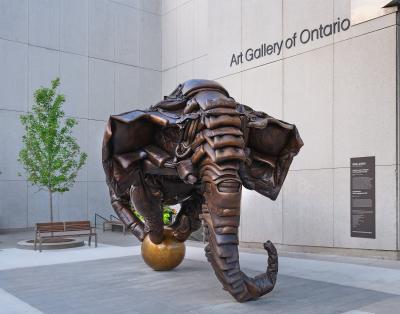
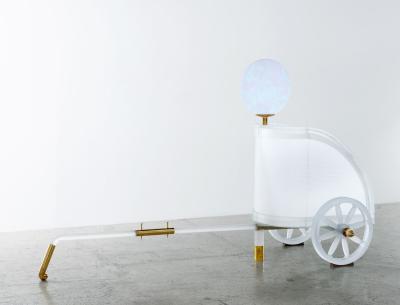
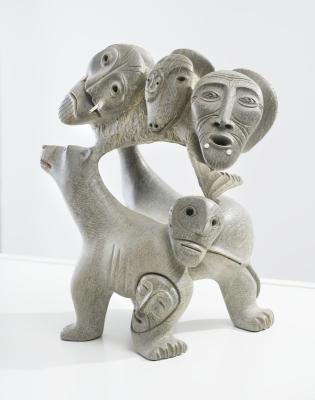
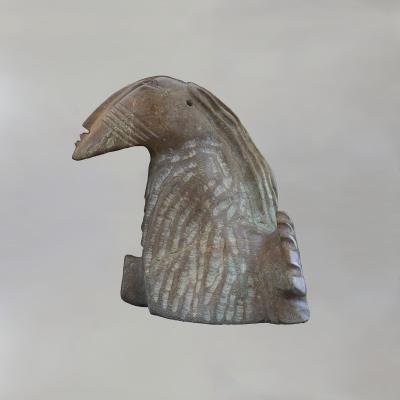
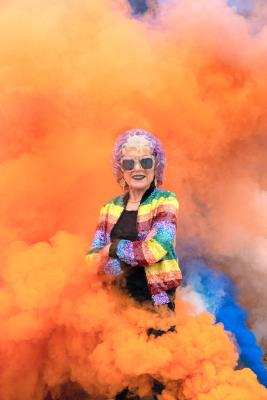
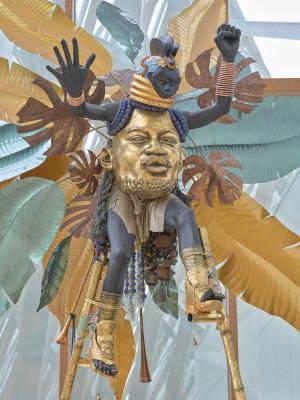
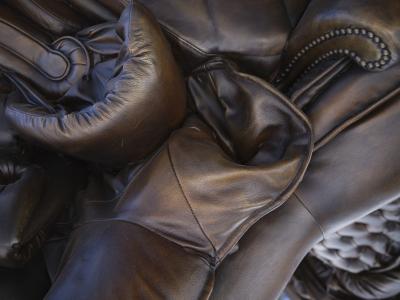
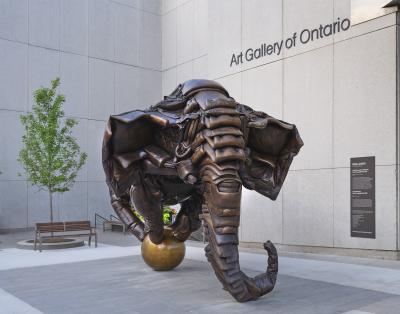
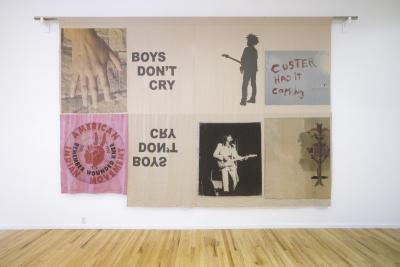
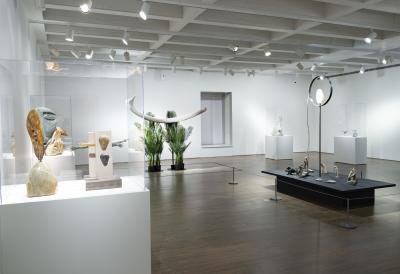
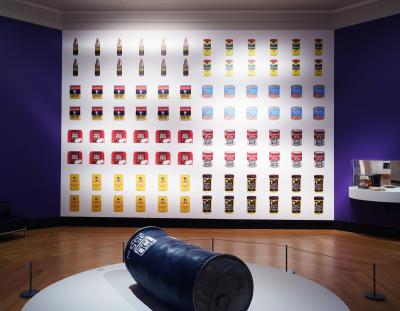
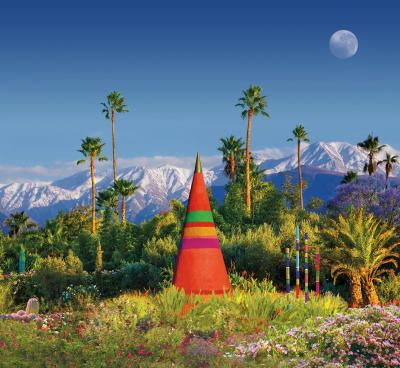
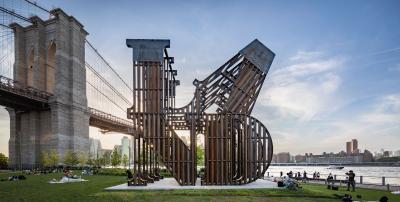
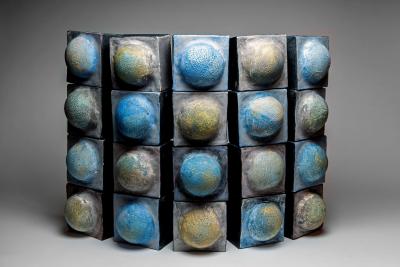
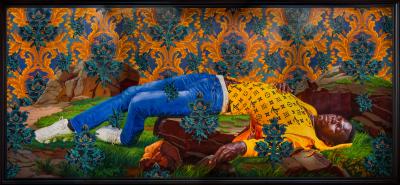
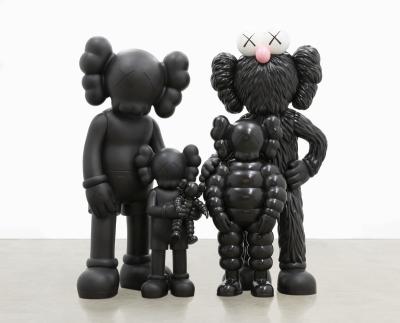
![Keith Haring in a Top Hat [Self-Portrait], (1989)](/sites/default/files/styles/image_small/public/2023-11/KHA-1626_representation_19435_original-Web%20and%20Standard%20PowerPoint.jpg?itok=MJgd2FZP)
